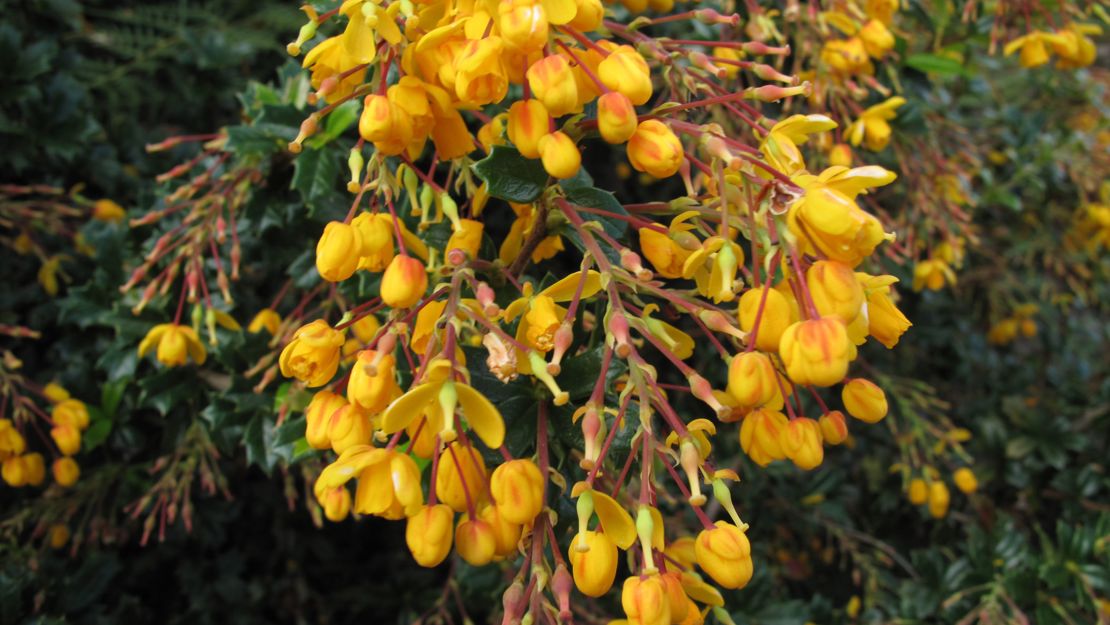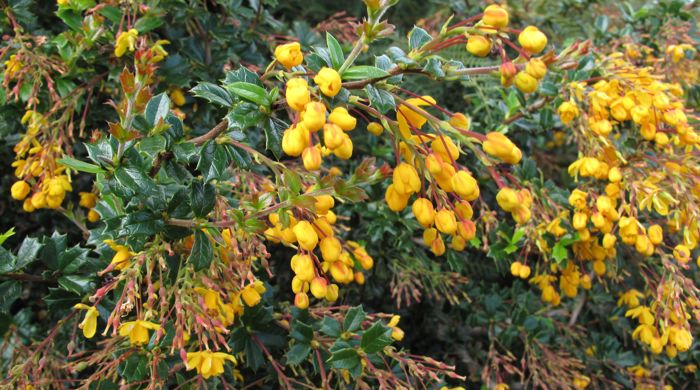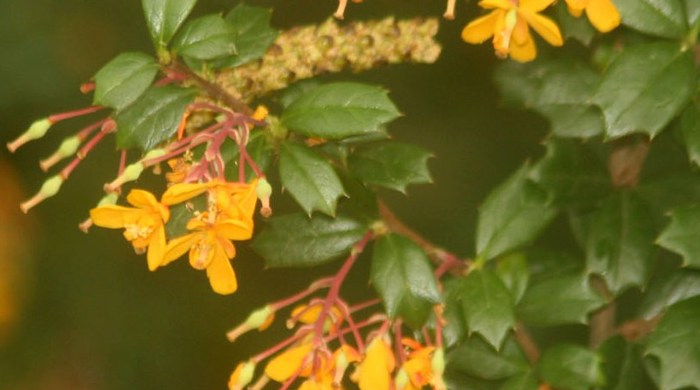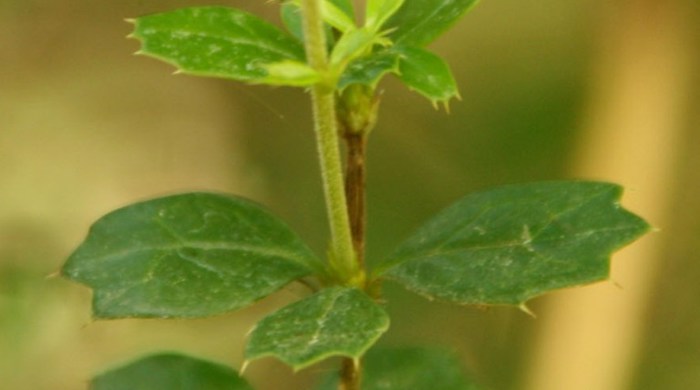Berberis darwinii
Darwin's barberry
Family: Berberidaceae
Origin: South America

Regional Pest Management Plan (RPMP) status
- National Pest Plant Accord Species
- Whole region — Sustained control
General description
Evergreen shrub < 5 m tall. Stems are tough, woody, densely hairy, and bear five-pronged needle-sharp spines. Leaves are < 30 x 15 cm, hairless, glossy, dark green and spiny-edged. Flowers are golden/yellow and hang in clusters July – February. Berries are oval and purple/black.
What you need to know
To help protect our environment:
- You must not breed, distribute, release or sell Darwin’s barberry. As Darwin’s barberry is a National Pest Plant Accord species, these restrictions apply within the Auckland region and across the whole of New Zealand.
- You must not plant Darwin's barberry within the Auckland region, unless you are transferring an existing plant on your land to another location within the boundaries of the same property.
- You must destroy any Darwin's barberry on land that you occupy if it has been planted in breach of the above rules and you are directed to do so by an authorised person.
Habitats
Disturbed forest, scrubland, wasteland.
Dispersal
Seeds dispersed by birds, soil movement, water and possibly possums. Vegetative spread from root suckering.
Impact on environment
Outcompetes native plants in disturbed forest and scrubland, altering the understorey. May impact the horticultural industry as a host of various plant pathogens.
Control
Site Management
Follow up treated areas 3 times per year. Encourage natural regeneration of native plants or replant treated areas where possible after 2-3 treatments to establish dense ground cover and minimise reinvasion.
Recommended approaches
Physical control
Method: Dig out.
Plant parts requiring disposal: All parts.
Disposal options: Remove to greenwaste or landfill if practical.
Biocontrol
Agents available but not yet released in the region:
- Darwin’s Barberry flower weevil (Anthonomus kuscheli)
- Darwin’s Barberry seed weevil (Berberidicola exaratus)
For more information about how biocontrol works, see What is biocontrol?
Community agrichemical control recommendations
No qualifications: Cut stump and paste freshly cut base of stems with metsulfuron gel.
Basic Growsafe certified: Foliar spray with 5g metsulfuron-methyl per 10L of water.
Certified Handler/Experienced agrichemical user: Foliar spray with 5g metsulfuron-methyl per 10L of water and 20ml penetrant.
Safety notes
Plant has thorns.
Caution: When using any herbicide or pesticide please read the label thoroughly to ensure that all instructions and safety requirements are followed.






